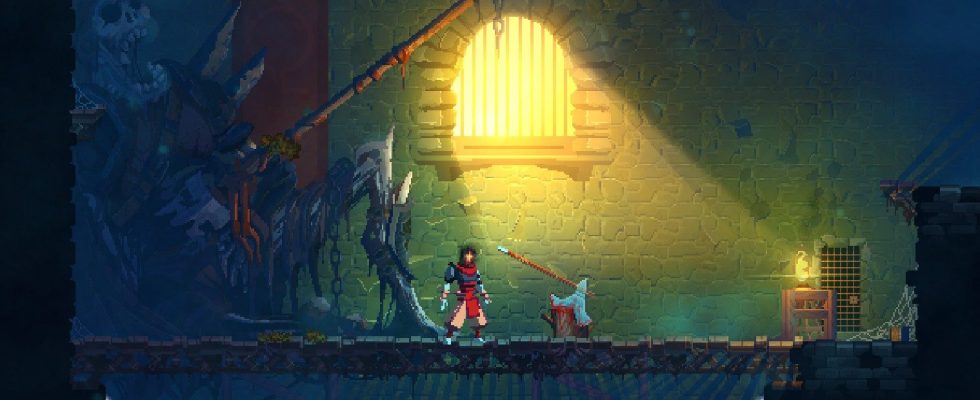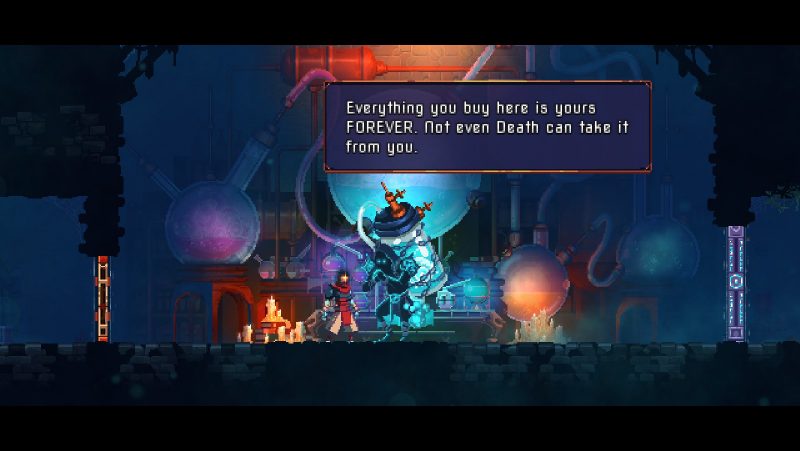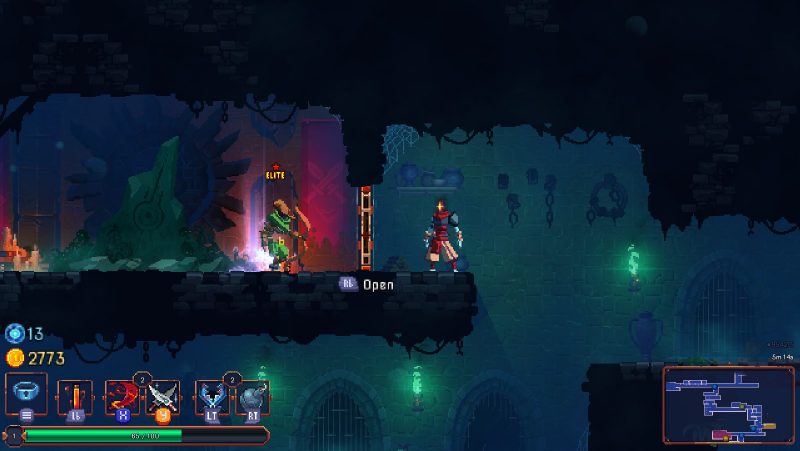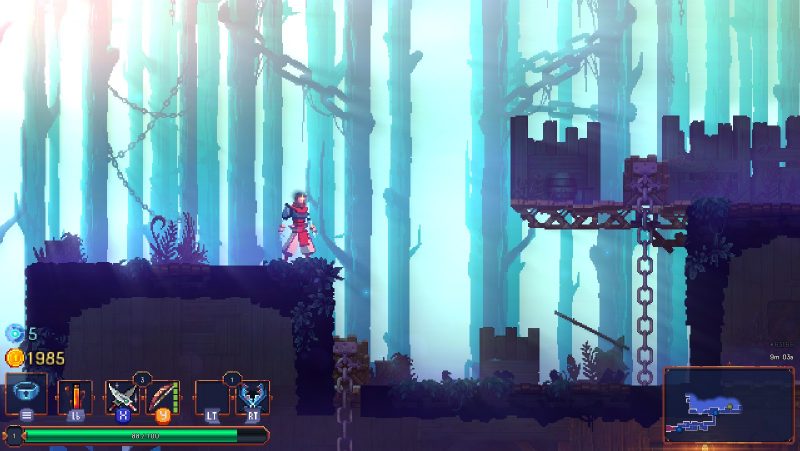As a self-styled ‘roguevania’, Motion Twin’s Dead Cells offers plenty for fans of the rogue-lite genre.
Taking cues from games such as Rogue Legacy, Castlevania and even Dark Souls, the 2D platformer offers a tough but compelling world to explore. Permadeath is a main feature, as it usually is with all rogue-likes, however Motion Twin has taken the best parts of the genre in recent years, offering a steady progression system that makes each progressive run not necessarily easier, but certainly interesting.
Different blueprints can be collected that are either dropped by enemies, found in secret alcoves or strewn about the levels just waiting to be picked up. These are then brought to a nebulous figure, dubbed the Collector, who helps you by crafting new weapons and equipment in exchange for souls. Once crafted weapons are more likely to show up in each run and can be improved by pouring more souls into them with each visit to the Collector. Permanent upgrades are also on offer, such as a health potion reminiscent of the Estus Flask from Dark Souls, among other things.
It’s obvious that Dead Cells is Motion Twin’s labour of love and it blasts out of the water the idea that pixel art is an “easy in” for indie developers. The world is gorgeous and meticulously crafted with varied, moody environments and an interesting variety of enemies that shifts with each zone. Some enemies seem to remain common features, carrying over from the Prisoner Cells where each run starts, while others are area specific. Beyond the common enemies of each zone, it’s possible to encounter elite versions also. On occasion, they can be found by pure happenstance, roaming free and wild, however it seems most common to encounter them by activating large rune stones that are found within the world.
Sometimes these stones are found within specific rooms, accessible via a door and nestled into a pit that commits you to the encounter. Other times they’re simply scattered about at random. They hit hard and represent a huge risk, but they also come with a hefty reward for victory.
Dead Cells offers the player a choice in how they wish to play, favouring neither a careful play style or a more bold one. Adding to this is the weapon variety; from more dexterous, twitchy daggers to big, lumbering broadswords and with magic and an array of item based skills, there’s something on offer for every style of play. With procedurally generated levels, each layout offers something a bit different and the opportunity for exploring different areas right from the get-go. That said, there have been a few times where I seemed to come upon a point of no progression, where to continue in the area seemed impossible. It was frustrating to know there were ledges that would have allowed further progress, and couldn’t be reached with my jump, or to glance exits to new areas on the map that seemed impossible to get to, locked away in enclosed chambers with no clear path to them.
On top of all of that, secret challenge rooms can be found by finding and activating runes embedded in the floor – something which I did purely by accident the first time. It was an interesting and mildly confusing surprise.
In Early Access as of May 10th, Dead Cells is an impressively polished game with a lot to offer already, and I look forward to seeing where it goes from here.




